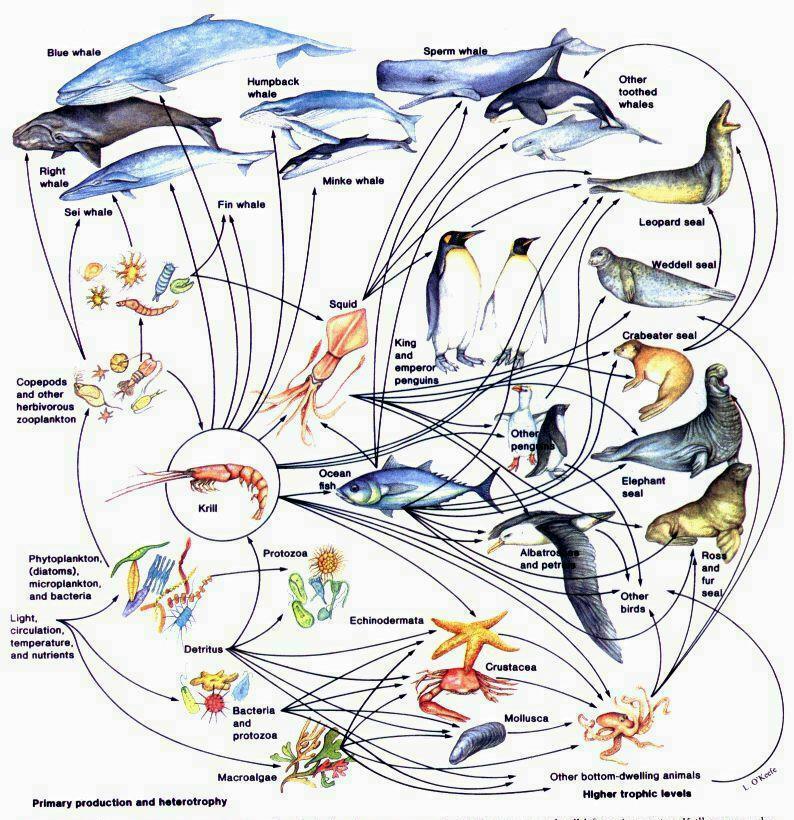
Here is a picture of a food web. Every Organism in the web belongs in its own separate niche then the others. even though they are all separate they are also all connected to one other. organisms from the very bottom such as bacteria can be connected to an organism like a whale or shark.
PLANKTON: one of the smallest organisms in the marine web. plankton can not swim against the current so they literally " go with the flow" These organisms include drifting animals, protists, archaea, algae, or bacteria that inhabit the pelagic zone of oceans, seas or bodies of fresh water; that is, plankton are defined by their ecological zone rather than phylogentic or taxonomic classification.
Plankton are primarily divided into trophic levels:
- Phytoplankton autotrophic , prokaryotic or ekaryotic algae that live near the water surface where there is sufficient light to support photosynthesis.
- Zooplankton small protozoans that feed on other plankton
- Bacterioplankton,bacteria and archaea, which play an important role in reminerlising organic material down the water column

FISH: are members of the paraphyletic group which is a group of organisms who bare gills and lack limbs with digits. are organisms higher up the plankton on the marine food web. they play a major role in all organisms life such as other marine life and humans! as fish can feed off plankton we feed off of fish.
After fish the organisms on the scale keep getting bigger and bigger.
things like birds or seals, sharks and whales. these predators are more consumers where they eat other organisms in the food web. organisms at the top are whales, sharks etc.
IN CONCLUSION: all organisms in the marine food web are connected to each other. organisms eat each other which helps then survive. if one organism was to disappear and become extinct the whole food web would suffer and possibly destroy the whole ocean planet. humans would also suffer for marine life plays a huge role in how we survive. we catch and use marine organisms as food everyday and are a huge source of food and income. the marine food web is very important because without it we would suffer. all the organisms work together to create a huge web of resources for humans. by working together they crea









